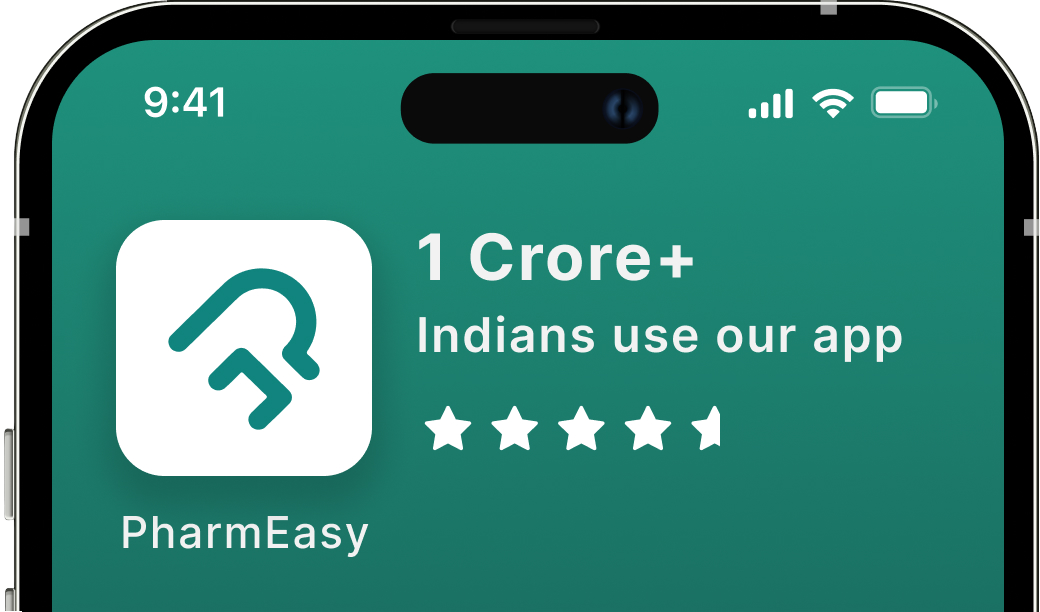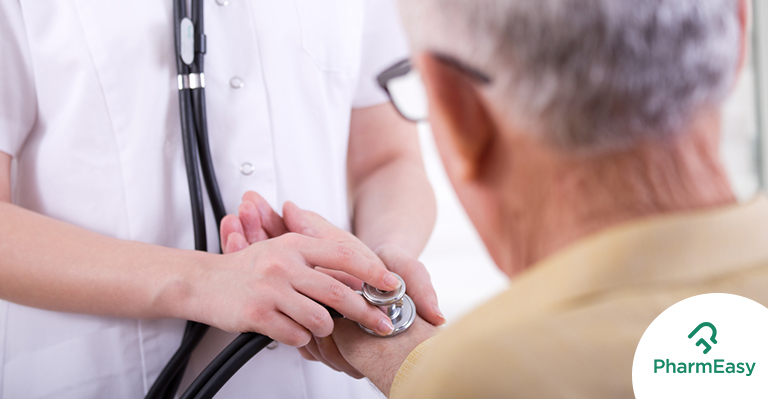Understanding High Blood Pressure in the Elderly
By Dr. Vishesh Bharucha +2 more

Get,

to manage your symptom
Get your,


4 Cr+ families
benefitted

OTP sent to 9988776655



You’ve successfully subscribed to receive
doctor-approved tips on
Whatsapp

Get ready to feel your best.

Hi There,
Download the PharmEasy App now!!


Register to Avail the Offer
Send OTPBy continuing, you agree with our Privacy Policy and Terms and Conditions

Hi There,
Sign up on PharmEasy now!!
Trusted by 4 crore+ families

OTP sent to 9988776655



You have unlocked 25% off on medicines




Code: NU25
By Dr. Vishesh Bharucha +2 more
Table of Contents
Among the most common concerns in the elderly are diabetes and high blood pressure, also known as hypertension.
Blood pressure is the force exerted by circulating blood on the walls of the arteries. It is measured using two values: the systolic pressure, which is the pressure when the heart contracts and pumps blood and the diastolic pressure, which is the pressure when the heart is resting between beats. Naturally, the diastolic pressure is lower than the systolic pressure.

In addition to diabetes and hypertension, other chronic conditions such as cardiovascular disease, osteoarthritis, and cognitive decline frequently affect older adults, highlighting the importance of regular health monitoring and management during this stage of life1.
For an average adult, the ideal blood pressure reading is around 120/80 mmHg. According to the current guidelines from the American College of Cardiology and American Heart Association (ACC/AHA), a normal blood pressure is defined as less than 120/80 mmHg2.
Previously, the term “prehypertension” was used to describe readings between 121-139 systolic and 80-89 diastolic. However, this term is now outdated. The 2017 ACC/AHA guidelines reclassify blood pressure levels as follows2:
Blood pressure readings of 140/90 mmHg or higher are considered high blood pressure, or hypertension.
In older adults, a slightly higher blood pressure range of 140–150 systolic and 90–96 diastolic may be acceptable. This is because blood vessels tend to stiffen with age, making a moderately elevated blood pressure necessary to ensure adequate blood flow to vital organs such as the heart and brain2.
It is important to note that permissive hypertension in seniors, particularly those over 60 or 80 years old, depends on factors such as frailty, risk of falls, existing health conditions, and personalised treatment goals.
High blood pressure can be a serious and potentially fatal condition, as it may damage vital organs such as the brain, heart, and kidneys. Many individuals remain unaware they have high blood pressure until significant complications arise, which is why hypertension is often referred to as the “silent killer3.”
One of the dangers of untreated high blood pressure is its impact on the eyes. Rather than the optic nerve “bursting,” severe or long-standing hypertension can cause damage to the retina, a condition known as hypertensive retinopathy. In extreme cases, swelling of the optic nerve head (papilledema) or blockage of retinal blood vessels can occur, leading to visual disturbances or even blindness.
High blood pressure also places strain on the cardiovascular system and kidneys. It can contribute to the development of aneurysms (localised arterial bulges) but these are not the usual cause of kidney or heart failure. Instead, sustained hypertension can damage blood vessels and organs over time, increasing the risk of stroke, heart attack, kidney failure, and other serious complications4.
Hypertension in seniors can result from a variety of factors. These include being overweight, side effects of certain medications, genetic predisposition, elevated blood pressure or early-stage hypertension, diabetes, a sedentary lifestyle, and stress. However, in many cases, the exact cause of high blood pressure remains unknown.
An important related concern is low blood pressure, known as hypotension, which also requires medical attention. Common symptoms such as blurred vision, confusion, dizziness, and fainting are often overlooked but can lead to serious complications if left untreated.
Additionally, a key age-related factor in hypertension among the elderly is arterial stiffness, or loss of vascular compliance. As blood vessels become less elastic with age, it contributes significantly to elevated blood pressure in this population5.
Adopting a healthier lifestyle can have a positive impact on blood pressure levels. The following measures are generally recommended6,7:
While lifestyle changes play an essential role, they may not be sufficient on their own, especially for those with more advanced stages of hypertension. In many cases, medication is necessary and may need to be continued long term, as advised by a healthcare professional.
To ensure treatment is effective:
Skipping medication or making changes without medical advice can lead to poor blood pressure control and increase the risk of complications.
Also Read: What Causes Low Creatinine
High blood pressure is a manageable condition, especially when identified early and treated appropriately. Regular monitoring, adherence to prescribed treatment, and a healthy lifestyle can significantly reduce the risk of complications. Speak to a qualified healthcare provider for personalised advice and ongoing care.
Also Read: Best Home Remedies For Hypertension By Dr. Rajeev Singh
Disclaimer: The information provided here is for educational/awareness purposes only and is not intended to be a substitute for medical treatment by a healthcare professional and should not be relied upon to diagnose or treat any medical condition. The reader should consult a registered medical practitioner to determine the appropriateness of the information and before consuming any medication. PharmEasy does not provide any guarantee or warranty (express or implied) regarding the accuracy, adequacy, completeness, legality, reliability or usefulness of the information; and disclaims any liability arising thereof.
Comments

Leave your comment...
You may also like
Comments